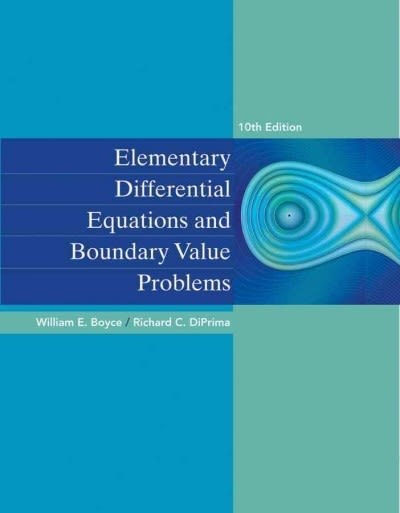Question
Expect to be A = {2, 5, 7, 9, 13, 25, 26}. (a) Find n(A). n(A) = (b) True or false: 7 A Substantial False


Expect to be A = {2, 5, 7, 9, 13, 25, 26}.
(a) Find n(A).
n(A) =
(b) True or false: 7 A
Substantial
False
(c) True or false: 2 A
Substantial
False
(d) True or false: 12 A
Substantial
False
This issue is fill free. Basically pick the correct answers. Much gratitude to you for your help
A coin-worked coffee machine made by BIG Corporation was proposed to deliver a mean of 7.3 ounces of coffee per cup. If it regulates more than that by and large, the association may lose cash, and if it distributes less, the customers may grumble. Tolerating that the mean proportion of coffee regulated by the machine, , is under 7.3 ounces, BIG plans to play out a genuine preliminary of the case that the machine is filling in as arranged. Specialists collect an unpredictable illustration of fill aggregates and track down that the mean of the model is 7.1 ounces and that the standard deviation is 0.3 ounces.
Considering this information, answer the requests under.
1. What are the invalid hypothesis (H0) and the elective theory (H1) that should be used for the test?
H0: (pick one) not actually, not by and large or identical to, more noticeable than, more essential than or comparable to, identical to, or not identical to.
(pick one) 7.1 ounces, 0.3 ounces, or 7.3 ounces.
H1: (Choose one) not by and large, not actually or identical to, more noticeable than, more imperative than or comparable to, comparable to, or not identical to.
(Pick one) 7.1 ounces, 0.3 ounces, or 7.3 ounces.
2. With respect to this test, what is a Type I bungle?
A sort I botch is:
(pick one) excusing or fail to excuse the hypothesis the is
(pick one) not actually, not by and large or comparable to, more noticeable than, more critical than or identical to, comparable to, or not comparable to
(Pick one) 7.1 ounces, 0.3 ounces, or 7.3 ounces, when, in all honesty, is
(pick one) not actually, not by and large or comparable to, more conspicuous than, more significant than or identical to, comparable to, or not comparable to
(Pick one) 7.1 ounces, 0.3 ounces, or 7.3 ounces.
3. Expect that we decide to excuse the invalid hypothesis. What sort of bungle may we make?
(Pick one) Type I or Type II
Select an appropriate outline to present the data in the table under. Quickly explain your
~29~
outline highlighting the keys concentrates some place in the scope of 2019 and 2020 (Hint: Use MS Excel to convey
the picked graph).
All appearances to Australia in April 2019 and in April
2020
Country of citizenship Apr-19 Apr-20
New Zealand 163,130 1,180
India 53,450 990
UK 83,960 530
Philippines 23,070 360
China 132,360 320
Pakistan 4,780 280
Indonesia 17,870 270
Germany 17,900 220
Malaysia 36,670 220
USA 63,270 200
Source
Australian Bureau of
Estimations
b) Briefly explain the meaning of the going with terms. Give at any rate one critical model.
Central limit theory
Confidence stretch
Confidence level
Interval measure
Point measure
Consider the examination of flipping a sensible coin until two heads or two tails appear in
movement.
(a) Describe the model space.
(b) What is the probability that the investigation closes before the sixth toss?
(c) What is the probability that the examination closes after an extensively number of tosses?
(d) Given that the examination closes with two heads, what is the probability that the
attempt closes before the sixth toss?
(e) Given that the preliminary doesn't end before the third toss, what is the probability that
the examination doesn't end after the sixth toss?
in the event that it's not all that much difficulty, tackle the (d) and (e) part




Step by Step Solution
There are 3 Steps involved in it
Step: 1

Get Instant Access to Expert-Tailored Solutions
See step-by-step solutions with expert insights and AI powered tools for academic success
Step: 2

Step: 3

Ace Your Homework with AI
Get the answers you need in no time with our AI-driven, step-by-step assistance
Get Started


